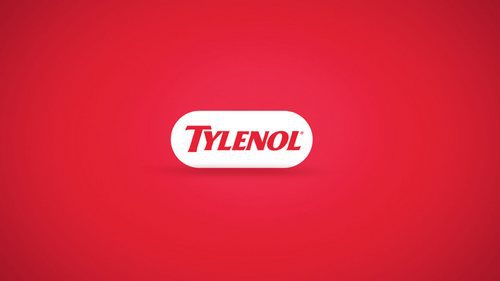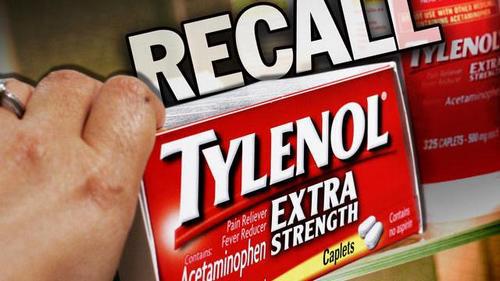The marketing mix of Tylenol analyses the 4Ps of Tylenol marketing strategies, including Product, Price, Place, and Promotions. Tylenol is a pain relief drug with paracetamol as its primary ingredient. This over-the-counter drug was introduced into McNeil labs in 1955 and has gained market share within the USA and beyond. Tylenol has suffered two significant sides since its inception, in 1982, when it was recalled after seven people died due to cyanide contamination, and in 2010. Besides these two occasions, the product has been known to be a good pain reliever for people of all classes and walks. Over the past decade, the Tylenol marketing mix has evolved significantly, focusing on enhancing brand equity through strategic marketing plans that prioritize customer needs and preferences.
As a paracetamol-based pain reliever, many companies and established brands compete with McNeil, as many paracetamol-based painkillers are worldwide. The most severe competitor is the generic world, producing Tylenol and other drugs. It is, therefore, vital that you carefully choose where to buy your Tylenol from.
About Tylenol
- Type: Medication
- Industry: Pharmaceutical
- Founded: 1955
- Founder: McNeil Laboratories
- Headquarters: United States
- Area served: Worldwide
- Key people: Alex Gorsky (Chairman) and Joaquin Duato (CEO)
- Number of employees: 133,000
Table of Contents
Tylenol Product Strategy
Tylenol is a pain killer with acetaminophen (paracetamol) as its active ingredient. The product brand comes in different forms, each targeting a market segment or specific group of people within the three market segments: older people, families & children, and the working class. In a nutshell, all the pain needs of human beings are taken care of by Tylenol.
After the two lowest moments in the history of Tylenol, Johnson & Johnson is doing all it can to ensure that consumer trust in the product’s quality is never compromised again.
The new Product Mix of Tylenol in 2023 is as follows (Source).
- Tylenol Extra Strength: Aimed at providing relief from moderate pain and fever. It is often used for headaches, backaches, toothaches, and minor arthritis pains.
- Tylenol Regular Strength: Designed for individuals who require less strength or have certain restrictions (like dosage limits). Adequate for mild to moderate pain and fever.
- Tylenol Arthritis Pain: A formula specifically targeted towards relieving arthritis pain. It usually has a longer-lasting effect compared to regular Tylenol.
- Tylenol PM: Combines pain relief with a sleep aid intended for use at night, especially when pain prevents sleep.
- Tylenol Cold & Flu: Aimed at relieving symptoms associated with the common cold and flu, such as fever, headaches, and congestion.
- Tylenol Sinus: Formulated to relieve sinus pain and pressure, often including ingredients to address nasal congestion.
- Children’s Tylenol: A line of products designed specifically for children, with appropriate dosing and flavors, to relieve pain and reduce fever.
- Infants’ Tylenol: Similar to Children’s Tylenol, but formulated for infants, including a different dosage method and concentration.
- Tylenol 8 Hour: A long-lasting pain relief option designed to provide relief for up to eight hours, usually used for chronic or severe pain.
- Tylenol Muscle Aches & Pain: Tailored for muscle aches and body pains, often used after physical exertion or for muscle-related discomfort.
Tylenol Place Strategy
McNeil intends to have a marketing strategy to have Tylenol penetrate the global market. But as for now, the drug is found in Canada, Lebanon, Egypt, Spain, Vietnam, Oman, Portugal, Myanmar, the U.S.A., Thailand, the Philippines, Switzerland, Brazil, and China. The product targets all age groups, from seniors to infants.
In other words, Tylenol is available everywhere for everyone to use. The market plan targets all the market segments, namely the working class, families with children, and older people. The working class is the most significant consumer, thanks to the need for fast pain relief. Tylenol’s rapid-release system thus fairs well with them. The elderly depend on Tylenol’s arthritis drugs, which quickly relieve pain. As long as older people have discovered the drug’s effectiveness, they become loyal Tylenol customers. An entire line of consumer products for treating colds and flu, specifically with children as the target base, is available for families and children.
Here’s the place strategy of Tylenol.
- Wide Retail Distribution: Tylenol products are widely available in various retail outlets, including pharmacies, supermarkets, and online stores. This ensures easy accessibility for consumers across diverse geographic locations.
- Healthcare Facilities and Clinics: Tylenol strategically places its products in hospitals, clinics, and other healthcare facilities, ensuring that healthcare professionals can access pain relief medications for patient care.
- Online Platforms and E-Commerce: Recognizing the growing trend in online shopping, Tylenol has a strong presence on e-commerce platforms, allowing consumers to purchase their products conveniently from the comfort of their homes.
- Strategic Partnership with Pharmacies: Tylenol often partners with major pharmacy chains, ensuring prominent shelf placement and sometimes exclusive deals, enhancing visibility and accessibility to consumers.
- Global Availability with Localized Strategies: Tylenol is a globally recognized brand; its placement strategy is tailored to meet each market’s specific needs and regulations, ensuring compliance and relevance in different countries and regions.
Tylenol Pricing Strategy
McNeil uses quality to gauge the price of their products, including Tylenol. On average, 1000 oral 325 mg Tylenol tablets cost about $54, translating to about 0.05/0.06 dollars per unit. This is, however, dependent on the pharmacy you make your purchase from. McNeil is also known to give great discounts to customers, especially retailers who buy Tylenol from the company in bulk. Most online stores and other brands like Drugs.com frequently offer discounts to attract more customers.
As a marketing expert analyzing Tylenol’s pricing strategy, it’s evident that the brand employs a combination of market-oriented and value-based pricing approaches, intricately balanced to maintain its position as a leader in the over-the-counter pain relief market:
- Competitive Pricing: Tylenol positions its products with competitive pricing within the over-the-counter pain relief market. This strategy ensures that Tylenol remains an appealing choice for consumers comparing prices among various brands, especially considering its established reputation for efficacy and trust.
- Value-Based Pricing: Tylenol’s pricing reflects its perceived value in the eyes of consumers. The brand leverages its longstanding reputation for safety and effectiveness, allowing it to command a slightly premium price compared to generic alternatives, underlining the consumer’s belief in ‘getting what you pay for.’
- Product Line Pricing: Tylenol employs a strategic product line pricing approach, where different products within its portfolio are priced differently based on their formulation, purpose (e.g., arthritis, cold, and flu), and strength. This tiered pricing structure caters to different market segments, allowing consumers to choose a product that fits their needs and budget.
- Dynamic and Regional Pricing: Understanding the dynamic nature of the global market, Tylenol adapts its pricing strategy based on regional economic factors, healthcare regulations, and competitive landscapes. This flexibility ensures market relevance and accessibility across different geographies.
- Psychological Pricing: Tylenol occasionally uses psychological pricing strategies, like setting prices slightly below a round number (e.g., $9.99 instead of $10.00). This approach makes the price appear significantly lower in the consumer’s mind, enhancing the purchase’s attractiveness.
In summary, Tylenol’s pricing strategy is a sophisticated blend of understanding market competition, consumer perception of value, and the diverse needs of various consumer segments, along with an awareness of regional market dynamics. This multi-faceted business approach helps Tylenol maintain its market leadership and brand loyalty in the competitive over-the-counter medication industry.
Tylenol Promotion Strategy
McNeil Consumer Healthcare is a Johnson & Johnson line that produces Tylenol. Tylenol assumes different marketing or somewhat promotional approaches. One such approach uses powerful advertising slogans such as “getting you back to normal” and “Feel better, Tylenol,” among others.
In an example of the current Feel Better Tylenol slogan used in commercials, emphasis is put on sleep, with voiceovers to describe the health benefits of sleep and how it can help repair your body. As a result, your pains and aches end up calming off. All in all, Tylenol is extensively advertised in all forms of media, with electronic media such as TV and social media taking the most significant share of advertisements. By continuously identifying new resources and opportunities, Tylenol’s marketing plan remains dynamic, adapting to customer preferences and market trends over a decade.
Patient Assistance Programs (P.A.P.s) are also widespread for Tylenol, where medicines are given free or at much lower prices or reasonable discounts to the uninsured and low-income earners.
Some Recent Video ads and Print ads for Tylenol are:
Liked this post? Check out the complete series on Marketing Mix

